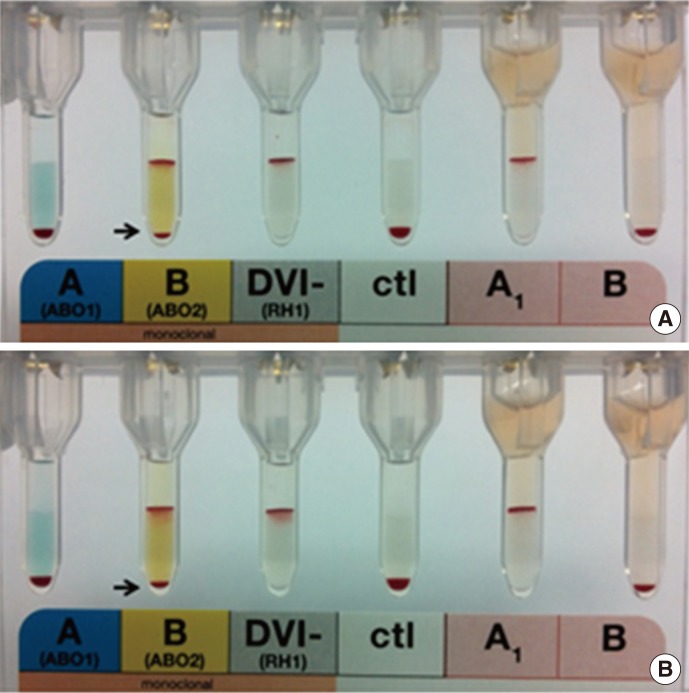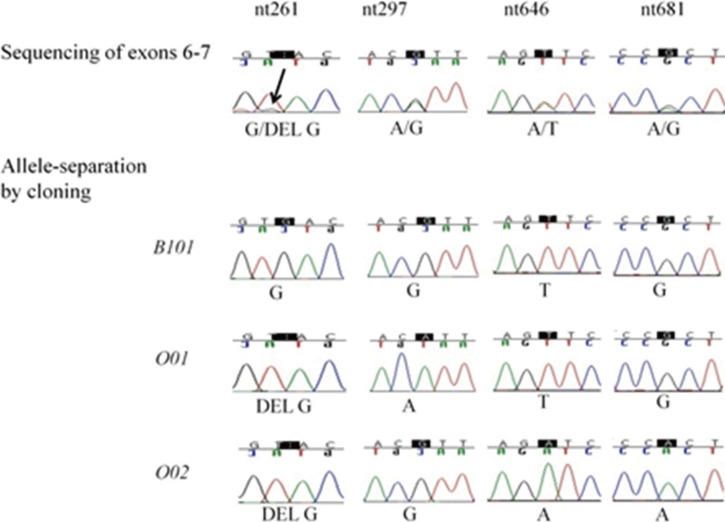Ann Lab Med.
2014 May;34(3):259-262. 10.3343/alm.2014.34.3.259.
The First Known Case of Blood Group Chimerism in Monochorionic Dizygotic Twins in Korea
- Affiliations
-
- 1Department of Laboratory Medicine, Chonnam National University Medical School, Gwangju, Korea. dcho@chonnam.ac.kr
- 2Department of Urology, Chonnam National University Hospital and Medical School, Gwangju, Korea.
- 3Department of Forensic Medicine, Chonnam National University Medical School, Gwangju, Korea.
- 4Department of Internal Medicine, Chonnam National University Medical School, Gwangju, Korea.
- KMID: 1791932
- DOI: http://doi.org/10.3343/alm.2014.34.3.259
Abstract
- No abstract available.
MeSH Terms
Figure
Reference
-
1. Miura K, Niikawa N. Do monochorionic dizygotic twins increase after pregnancy by assisted reproductive technology? J Hum Genet. 2005; 50:1–6. PMID: 15599781.
Article2. Park YS, Choi SH, Shim KS, Chang JY, Hahn WH, Choi YS, et al. Multiple births conceived by assisted reproductive technology in Korea. Korean J Pediatr. 2010; 53:880–885. PMID: 21189958.
Article3. Ekelund CK, Skibsted L, Sogaard K, Main KM, Dziegiel MH, Schwartz M, et al. Dizygotic monochorionic twin pregnancy conceived following intracytoplasmic sperm injection treatment and complicated by twin-twin transfusion syndrome and blood chimerism. Ultrasound Obstet Gynecol. 2008; 32:832–834. PMID: 18956441.
Article4. Jang JH, Jung H, Kim JH, Park WS, Kim SH. Blood chimerism in a dizygotic dichorionic pregnancy. Korean J Lab Med. 2010; 30:521–524. PMID: 20890086.
Article5. Cho D, Lee JS, Yazer MH, Song JW, Shin MG, Shin JH, et al. Chimerism and mosaicism are important causes of ABO phenotype and genotype discrepancies. Immunohematology. 2006; 22:183–187. PMID: 17430077.
Article6. Won EJ, Park HR, Park TS, Oh SH, Shin MG, Shin JH, et al. Amplification refractory mutation system-PCR is essential for the detection of chimaeras with a minor allele population: a case report. J Clin Pathol. 2013; 66:446–448. PMID: 23418339.
Article7. Bluth MH, Reid ME, Manny N. Chimerism in the immunohematology laboratory in the molecular biology era. Transfus Med Rev. 2007; 21:134–146. PMID: 17397763.
Article
- Full Text Links
- Actions
-
Cited
- CITED
-
- Close
- Share
- Similar articles
-
- Confined Blood Chimerism in Monochorionic Diamniotic Dizygotic Twin
- Blood Chimerism in a Dizygotic Dichorionic Pregnancy
- A case of down's syndrome in twins of unlike sex
- Two Cases of Collodion baby in Dizygotic Twins
- Rare Complications with Monochorionic Twins: Ultrasonography and Pathology Correlations




